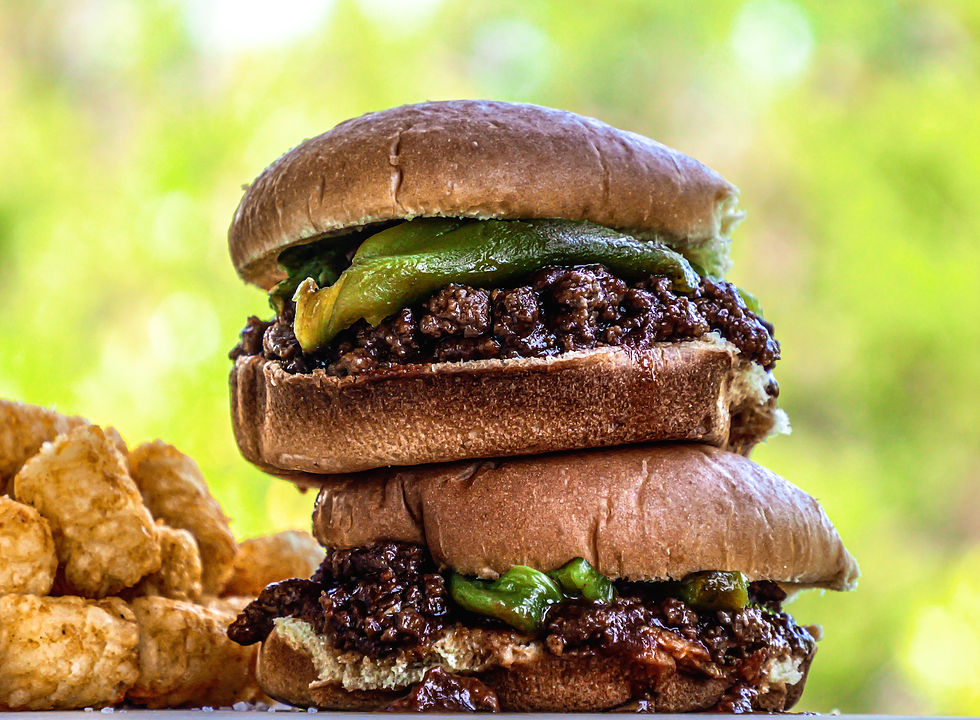Preparing a Rack of Venison
- Mike Reeber
- Oct 14, 2018
- 3 min read
Updated: Dec 14, 2019
To me, processing freshly harvested wild game is a real treat. The fact that you can take your time and cut everything exactly how you'd like it without having to explain to someone is the best part. I've always processed venison the same way over the years, pretty standard preperation. Cape out the animal, remove the backstraps on either side of the spine, quarter it and don't forget to get those tenderloins out; done deal. Over the years, my passion for cooking has led me to get a little bit more creative with my butchering skills and although what I'm currently doing is not exactly "new", you're less likely to see most hunting camps doing it.
I'm a huge fan of a perfectly cooked rack of lamb. It's got great flavor, it's easy to cook and it's impressive looking to serve. Recently, I thought "I'm pretty sure I could do this with venison instead of cutting everything off the bone". So, this weekend it was time to give it a try. At the ranch, we process our animals using the gutless method. It's cleaner and makes life super easy when you're quartering out an animal. However, to end up with a rack of venison, I regret to say that you must gut your animal fully. Though it's not the biggest deal in the world, it does add a little bit of extra work into to process.
Start by caping out your animal, gutting it and removing the front two shoulders. Remove the inside tenderloins and saw the spine in half right before your get to the rear quarters. At this point, you'll be left with the ribcage and backstrap all on one piece. This is where the work begin.

Take your trusty bone saw, or whatever you use to saw through bone and remove the neck from the entire piece. What you're looking to end up with is the entire length of the ribcage and backstrap, nothing else. Once you have it in this state, cut the bones to the desired length. Typically a few inches will do, but you don't need the whole thing. Place the rest of the ribs in the cooler and use them to make stock or just smoke them on the pit. At this point, you'll have to flip the piece over and saw on either side of the spine. BE CAREFUL HERE! Slow and steady wins the game for this part. Essentially, you're cutting out the spine to be left with either side of meat and ribs, which are connected to one another. Once you saw through the meat, take a filet knife and trim the rest off of the spine. Now, you're left with two beautiful pieces of backstrap, still on the bone and nearly ready to cook.

The last few steps are equally just as critical as the rest. Take a small knife and cut between the bones, but only down to where it meets the meat on the top side of the ribs. You'll notice that when you flip it over, the cut will not be all the way down the rib and that's ok. If it's cut too much, the meat will begin to fall off. Taking the back of your knife, scrape each rib and remove as much rib meat as possible to begin cleaning up the bones. Depending on the animal, you might even have to trim some of the rib meat with the blade. The whole point of cleaning each rib down to the bone is to prevent burning when it's cooking. Trust me, putting in the extra time now is key to having a perfect looking final product. Once everything is trimmed and scraped off the rib, you can remove any excess fat and meat by using a piece of butchers twine. Wrap it around each rib a couple of times and pull toward you. This process might have to be repeated several times, but will help remove everything from the bone.
At this point, you can slice into chops or leave whole, both are outstanding. The final product is a perfect looking piece of venison with all of the bones attached and ready to cook.
Bon appétit and happy hunting.














Comments